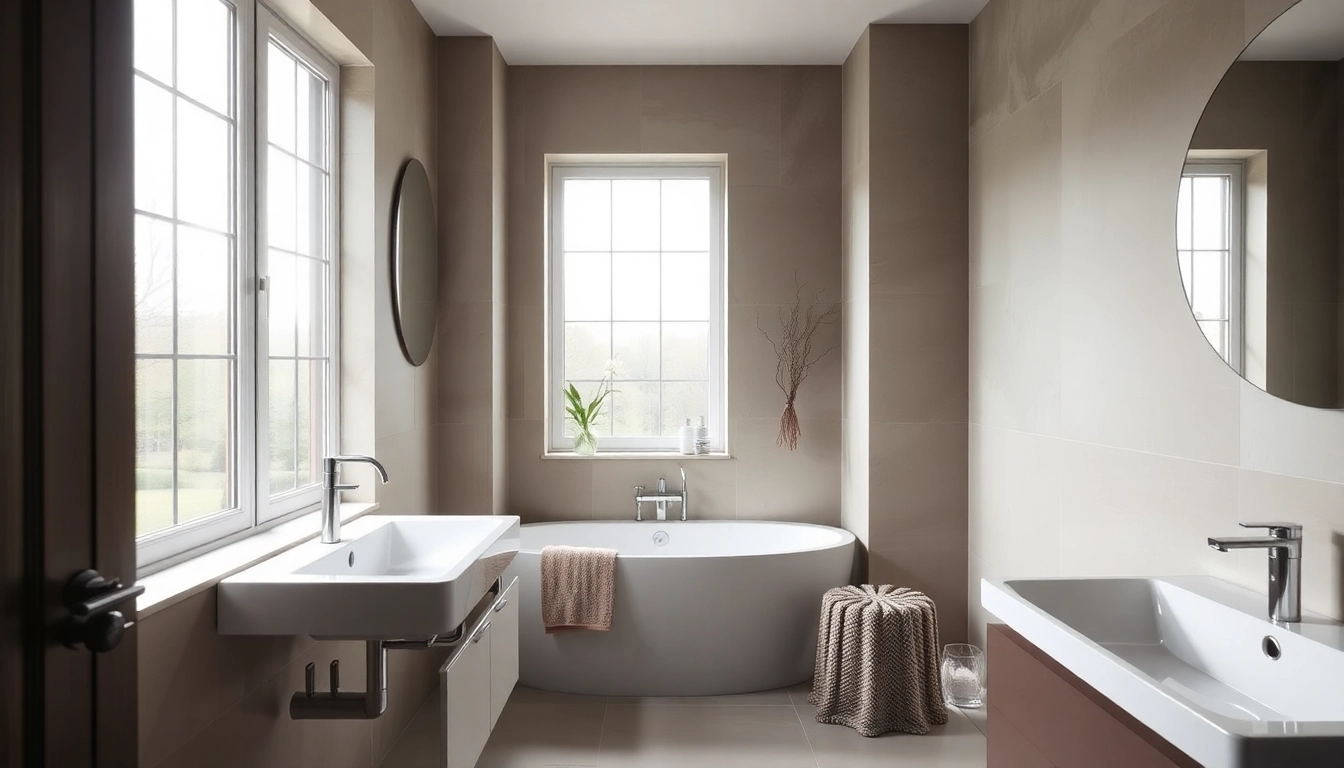What is an Automatic Bioethanol Fireplace?
Definition and Overview
An automatic bioethanol fireplace is a modern heating solution that utilizes bioethanol fuel to create a flame without the need for a traditional chimney or flue. These fireplaces are designed for convenience, featuring automatic ignition, adjustable flame sizes, and remote controls for easy operation. They are particularly popular in contemporary home designs due to their eco-friendly nature and the warmth they provide without the emissions associated with wood or gas-burning fireplaces.
Advantages of Automatic Systems
Automatic bioethanol fireplaces come with a host of advantages that make them appealing to homeowners:
- Ease of Use: With remote and smartphone controls, users can ignite or extinguish their fires from the comfort of their seating.
- Environmental Benefits: Bioethanol is derived from renewable sources and burns clean, producing only water vapor and carbon dioxide.
- Design Flexibility: They can be integrated into various architectural styles, from sleek modern to rustic, while also offering customizable designs.
- Safety Features: Many automatic models include sensors that shut off the fuel supply if the flames exceed a set height or if the unit is tipped over.
How They Work
Automatic bioethanol fireplaces operate by utilizing a fuel tank and electronic burners. When the user activates the fireplace using a remote control, the system ignites the bioethanol within the burner. Sensors monitor and adjust the burn quality, maintaining a consistent flame that can be adjusted for size and intensity. Furthermore, these systems often come equipped with features that detect potential hazards, enhancing user safety.
Key Features of Automatic Bioethanol Fireplaces
Remote and Smart Controls
One of the standout features of automatic bioethanol fireplaces is their integration with smart technologies. Users can control these fireplaces via remote control, apps, or even smart home systems such as Alexa or Google Home. This capability not only adds an element of convenience but also allows users to create customized settings based on personal preferences or specific occasions.
Safety Features Explained
Safety is paramount in any fireplace technology, and automatic bioethanol fireplaces do not compromise on this aspect. Common safety features include:
- Flame Height Sensors: These sensors ensure that the flame height remains within safe limits.
- Automatic Shut-off: The fireplace will automatically turn off if it detects excessive heat, a sudden disturbance, or an empty fuel tank.
- Ventilation Monitoring: Some models come with sensors to ensure that proper airflow is maintained, enhancing safety and efficiency.
Design Options to Suit Your Space
Automatic bioethanol fireplaces are available in a myriad of designs, ranging from wall-mounted fixtures to freestanding units and inserts for existing fireplaces. These designs not only serve an aesthetic purpose but also enhance the ambiance of any space while providing warmth. Common materials used include tempered glass, stainless steel, and ceramic, all of which complement various interior styles.
Comparison: Automatic vs. Manual Bioethanol Fireplaces
Ease of Use
When comparing automatic and manual bioethanol fireplaces, ease of use is a significant differentiator. Automatic models allow for one-touch ignition and flame adjustment, while manual fireplaces require physical handling of the fuel and ignition process. For those seeking the ultimate in convenience, automatic options present a clear advantage.
Operational Costs
In terms of operational costs, both types of fireplaces will incur expenses related to the purchase of bioethanol fuel. However, automatic models often have more efficient fuel consumption due to their controlled burning processes. While manual fireplaces may have a lower upfront cost, their operational efficiency can lead to higher long-term fuel expenses.
Safety Considerations
Safety is enhanced in automatic bioethanol fireplaces due to integrated technology that can prevent accidents. In contrast, manual models rely more heavily on user vigilance and proper handling of the burning fuel. As such, families with children or pets may find automatic models to be a more suitable option for peace of mind.
Choosing the Right Automatic Bioethanol Fireplace for You
Space and Design Compatibility
When selecting an automatic bioethanol fireplace, consider your available space and the overall design aesthetic of your home. These fireplaces can serve as focal points in living rooms, cozy additions to bedrooms, or elegant features in outdoor spaces. Measure the space available, and evaluate different designs to ensure a good fit.
Fuel Efficiency and Capacity
The efficiency of bioethanol fireplaces can vary significantly. While some models are designed for maximum output with minimal fuel consumption, others may consume more fuel resulting in higher costs. Always check the manufacturer’s specifications for fuel capacity and burn time to find the best fit for your needs. Efficient models may seem more expensive initially but can offer cost savings in fuel over time.
Brands to Consider
There are numerous brands available in the market that specialize in automatic bioethanol fireplaces. A few reputable brands include:
- Ignis Products: Known for their smart technology and user-friendly designs, Ignis offers efficient and stylish solutions.
- A-Fireplace: Focused on innovation, A-Fireplace prioritizes safety and ease of use with robust designs.
- Planika: Renowned for luxurious designs and high-quality materials, Planika provides advanced features and elegant finishes.
Maintenance Tips for Your Automatic Bioethanol Fireplace
Regular Cleaning Procedures
Maintaining an automatic bioethanol fireplace involves regular cleaning to ensure it operates efficiently. It is advisable to:
- Clean the glass surfaces with a non-abrasive cleaner to remove soot and residues.
- Regularly inspect the fuel tank and burners for debris or build-up that may hinder performance.
- Wipe down the exterior surfaces to prevent the accumulation of dust and grime.
Checking Safety Mechanisms
It is critical to routinely check the safety mechanisms of your automatic fireplace. This could include testing the sensors to ensure they are working correctly and confirming that the automatic shut-off feature activates as intended. Manufacturers often provide guides on routine checks and maintenance schedules that should be followed.
Fuel Management Best Practices
Proper fuel management is pivotal for the safe and efficient operation of an automatic bioethanol fireplace. Best practices include using high-quality bioethanol fuel recommended by the manufacturer, avoiding mixing different types of fuel, and ensuring the fuel tank is not overfilled to prevent spills. Regularly assess fuel levels to plan for refueling before it runs out.



